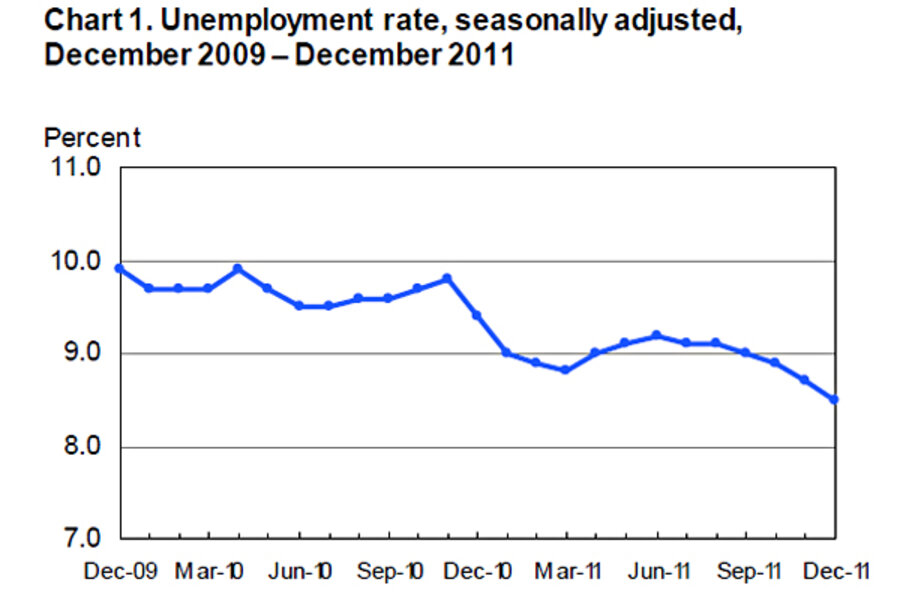Jobless rate falls to 8.5 percent
Employers added 200,000 jobs on net last month, while the jobless rate ticked down to 8.5%, according to this morning’s jobs report from the BLS. That’s a bit better than what was expected, reflecting moderate but broad labor demand across almost all sectors of the private job market–the public sector continues to be a notable sore spot.
All told, a solid report, with most industries adding jobs, the work week expanding a bit, and the jobless rate revealing a slow but steady trend down–see figure.
With December’s data, we now have full year 2011 numbers. Payrolls added 1.6 million jobs last year, the best showing since 2006. Private sector payrolls were up 1.9 million, the most jobs added in the private sector since 2005.
In other words, the labor market is improving, and has a bit of trend going for it–employers remain cautious–hiring can’t be called robust–but it has been slow and steady.
Securing, sustaining, and building on these gains, particularly in the face of economic risk factors–Europe, oil, fading stimulus–must become the top goal of policy makers who have heretofore been way too cavalier about this primary responsibility.
More to come…






